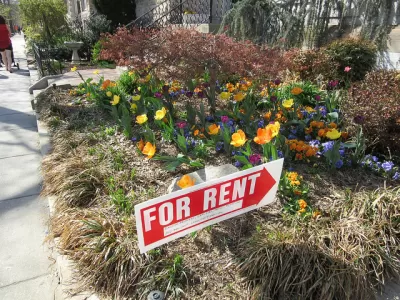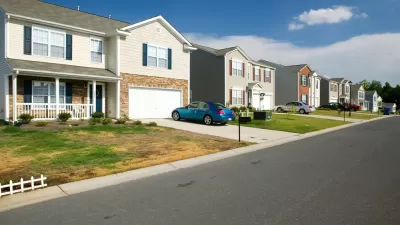The latest data from CoreLogic from December 2020 shows that despite headlining-grabbing rent declines in San Francisco and New York, some rents are continuing and even surpassing pre-pandemic trends.

Understanding the state of the rental housing market after a year of pandemic disruption of the economy and day-to-day life requires some nuance, and a distinction between different varities of rental units.
According to the latest data from CoreLogic, rents for single-family homes rose 3.8% nationwide in December 2020 compared to December 2019. Rents in Phoenix jumped 10.7% in the same time period.
Veronika Bondarenko shares the news of the new CoreLogic data for Inman, noting that while rents dipped nationwide early in the pandemic "the cost of renting a home has continued to climb at unprecedented rates throughout both the coronavirus and subsequent unemployment crises."
According to the data, single-family rental prices are now growing faster than they were before the pandemic, thanks to new demand for more spacious abodes.
The trend in single-family rents stands in contrast to urban multi-family units, which "were one of the only types of real estate to see prices drop somewhat," according to Bondarenko. The disparities are obvious in segments within the single-family rental market too:
Higher-priced homes, or properties whose values are above 125 percent of a given area’s median, saw the single biggest jump in rental prices from 2.4 percent in December 2019 to 4.3 percent now. Lower-end homes, which are worth 75 percent or less than a given area’s median, were the only category to see prices drop, down from 3.5 percent in 2019 to 3.3 percent now.
Some of the cities with the highest rent increases rental prices in 2020 were already experiencing explosive growth before the pandemic—Bondarenko specifically mentions Phoenix, Tucson, and Charlotte as the three cities with the largest rent increases in 2020.
FULL STORY: The cost of rent just keeps climbing: CoreLogic

Planetizen Federal Action Tracker
A weekly monitor of how Trump’s orders and actions are impacting planners and planning in America.

Maui's Vacation Rental Debate Turns Ugly
Verbal attacks, misinformation campaigns and fistfights plague a high-stakes debate to convert thousands of vacation rentals into long-term housing.

San Francisco Suspends Traffic Calming Amidst Record Deaths
Citing “a challenging fiscal landscape,” the city will cease the program on the heels of 42 traffic deaths, including 24 pedestrians.

Amtrak Rolls Out New Orleans to Alabama “Mardi Gras” Train
The new service will operate morning and evening departures between Mobile and New Orleans.

The Subversive Car-Free Guide to Trump's Great American Road Trip
Car-free ways to access Chicagoland’s best tourist attractions.

San Antonio and Austin are Fusing Into one Massive Megaregion
The region spanning the two central Texas cities is growing fast, posing challenges for local infrastructure and water supplies.
Urban Design for Planners 1: Software Tools
This six-course series explores essential urban design concepts using open source software and equips planners with the tools they need to participate fully in the urban design process.
Planning for Universal Design
Learn the tools for implementing Universal Design in planning regulations.
Heyer Gruel & Associates PA
JM Goldson LLC
Custer County Colorado
City of Camden Redevelopment Agency
City of Astoria
Transportation Research & Education Center (TREC) at Portland State University
Jefferson Parish Government
Camden Redevelopment Agency
City of Claremont





























